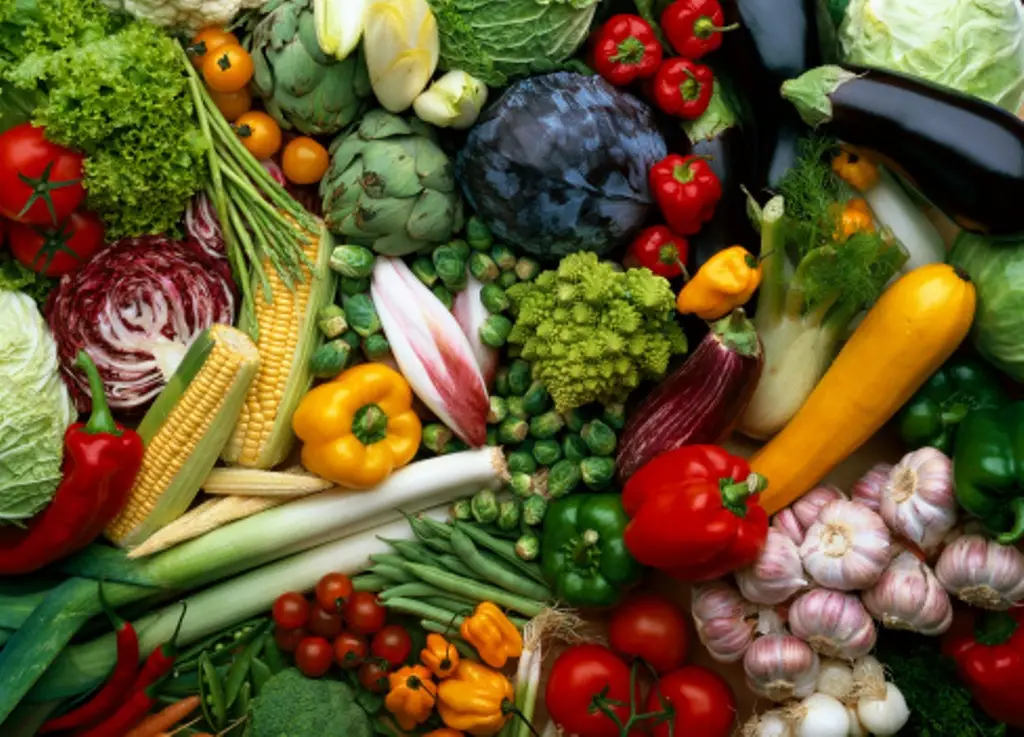
One of the best ways to improve health and well-being is by consuming lots of vegetables. There good vitamins, nutrients, and dietary fiber in all vegetables, but some stand out for their outstanding benefits.
Depending on their diets, overall health, and nutritional needs, particular vegetables can provide more health benefits to some individuals.
In this article, we will talk about the seven most nutritious vegetables and ways of consuming them as part of a regular diet.
Healthy Vegetable List
Spinach:
Spinach is a perfect addition to any animal- or dairy-free diet because of its iron and calcium content. One cup of raw spinach consists of water and contains just 7 calories. Vitamin K is essential for a healthy body, as it enhances calcium absorption and spinach is rich in Vitamin K as well as other nutrients as well. Research indicates that leaves of spinach can lower blood pressure and benefit the health of the heart.
How to consume spinach?
In salads, burgers, and smoothies, people love spinach as raw. Cooked spinach has valuable health benefits as well and is an outstanding complement to pasta dishes and soups.
Brocolli:
It is an extremely nutritious vegetable that belongs to the cabbage, kale, and cauliflower family. They are all vegetables which are cruciferous. Each cup of broccoli that is diced and boiled contains: About 31 calories.
The complete daily vitamin K requirement
Twice the amount of vitamin C recommended daily
According to the National Cancer Institute, animal research has shown that certain chemicals found in cruciferous vegetables called indoles and isothiocyanates can help prevent cancer in a variety of organs, including the bladder, breasts, liver, and stomach.
These compounds can shield cells from exposure to DNA, inactivate agents that cause cancer, and have anti-inflammatory effects. Study in humans, though, has been mixed.
How to cook broccoli?
Broccoli is very flexible. It can be baked, steamed, grilled, mixed into soups or eaten warm in salads.
Seaweed:
Versatile and nutritious plants provide many health benefits and are also known as sea vegetables. Popular seaweed forms include:
Seaweed is one of the only plant-based suppliers of docosahexaenoic acid and eicosapentaenoic acid, both omega-3 fatty acids. These are important for health and are found mainly in meat and dairy products. There is a somewhat different nutritional profile for each species of seaweed, but they are usually rich in iodine, an essential nutrient for thyroid function.
To decrease cellular damage, consuming a variety of sea vegetables will provide the body with many significant antioxidants. Chlorophyll, which is a plant pigment that has anti-inflammatory effects, is found in many kinds of seaweed. Brown sea vegetables contain another potent antioxidant called fucoxanthin, such as kelp and wakame. This is 13.5 times the antioxidant capacity of vitamin E, study suggests.
Bell peppers:
Red, yellow, or orange may be sweet bell peppers. Unripe green bell peppers, though they taste less sweet, are also common.
A cup of red bell pepper, sliced, provides 39 calories, 190 mg vitamin C, 0.434 mg folate, beta carotene, vitamin B6, which is converted into vitamin A by the body.
In bell peppers, the antioxidants and bioactive chemicals present include: Ascorbic acid, Carotenoids, Flavonoids of vitamin C, Beta carotene, such as quercetin and kaempferol
How to cook bell peppers
Bell peppers are particularly flexible and can conveniently be added to spaghetti, scrambled eggs, or a salad. Sliced with a side of guacamole or hummus, a person may also enjoy them.
Garlic
In food and medicine, people have long used garlic. There are just 4 calories in each garlic clove and it is low in vitamins and minerals. Garlic, however, is a natural antibiotic. As an example, a 2018 study, states that since the 16th century, individuals have used garlic for reasons close to those of antibiotics.
The root of its health benefits is considered to be allium, a part of garlic. However, it would take further studies to validate this.
How to consume garlic?
Heating garlic decreases the nutritional advantages, but consuming garlic raw, for example, in salads, risottos or dips, it is best.
As well as safe doses of probiotics, fermented vegetables contain all the nutrients of their unfermented versions. Probiotics are helpful bacteria living in the body and in some foods and supplements that are available. Many experts claim that gut wellbeing can be improved by probiotics.
Probiotics can help with the symptoms of irritable bowel syndrome, according to the National Center for Complementary and Integrative Health. They can also avoid diarrhea caused by infection or by antibiotics.
For fermentation, certain healthy vegetables include:
-
Including cabbage,
-
Cucumbers as pickles,
-
Carrots
-
Cauliflower flower etc.
How to eat vegetables that are fermented?
In salads, burgers, or as a side dish, people eat fermented vegetables.
Beets:
One cup of raw beets contains 58.5 Of calorie, 442 potassium milligrams (mg), 148 micrograms of folate. As vegetables are high in heart-healthy nitrates, beets and beet juice are excellent for improving heart health. A small 2012 study reports that drinking 500 g of beet juice in healthy individuals has significantly reduced blood pressure.
People with diabetes can also benefit from these vegetables. Beets contain an antioxidant called alpha-lipoic acid, which can be beneficial for persons with nerve disorders connected with diabetes, called diabetic neuropathy.
How to consume beets?
Their natural sweetness is brought out by roasting beets, but they still taste very raw in juices, salads, and sandwiches.
For health, eating vegetables every day is vital. They contain valuable vitamins, minerals, and other nutrients, such as fiber and antioxidants. Research clearly indicates that the lowest risk of many diseases, including cancer and heart disease, is in people who eat at least 5 servings of vegetables a day. To reap as much nutritional advantages as possible, enjoy a variety of vegetables every day.











